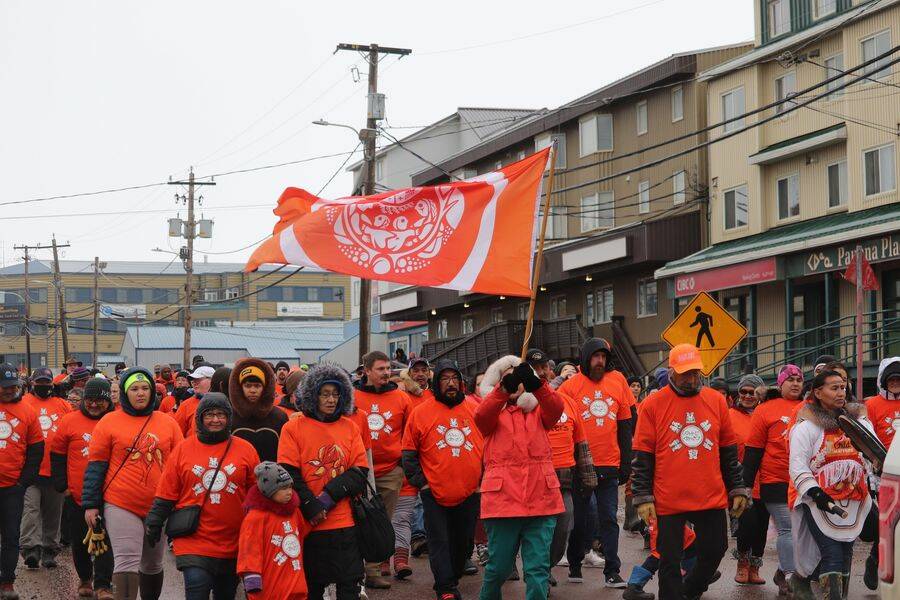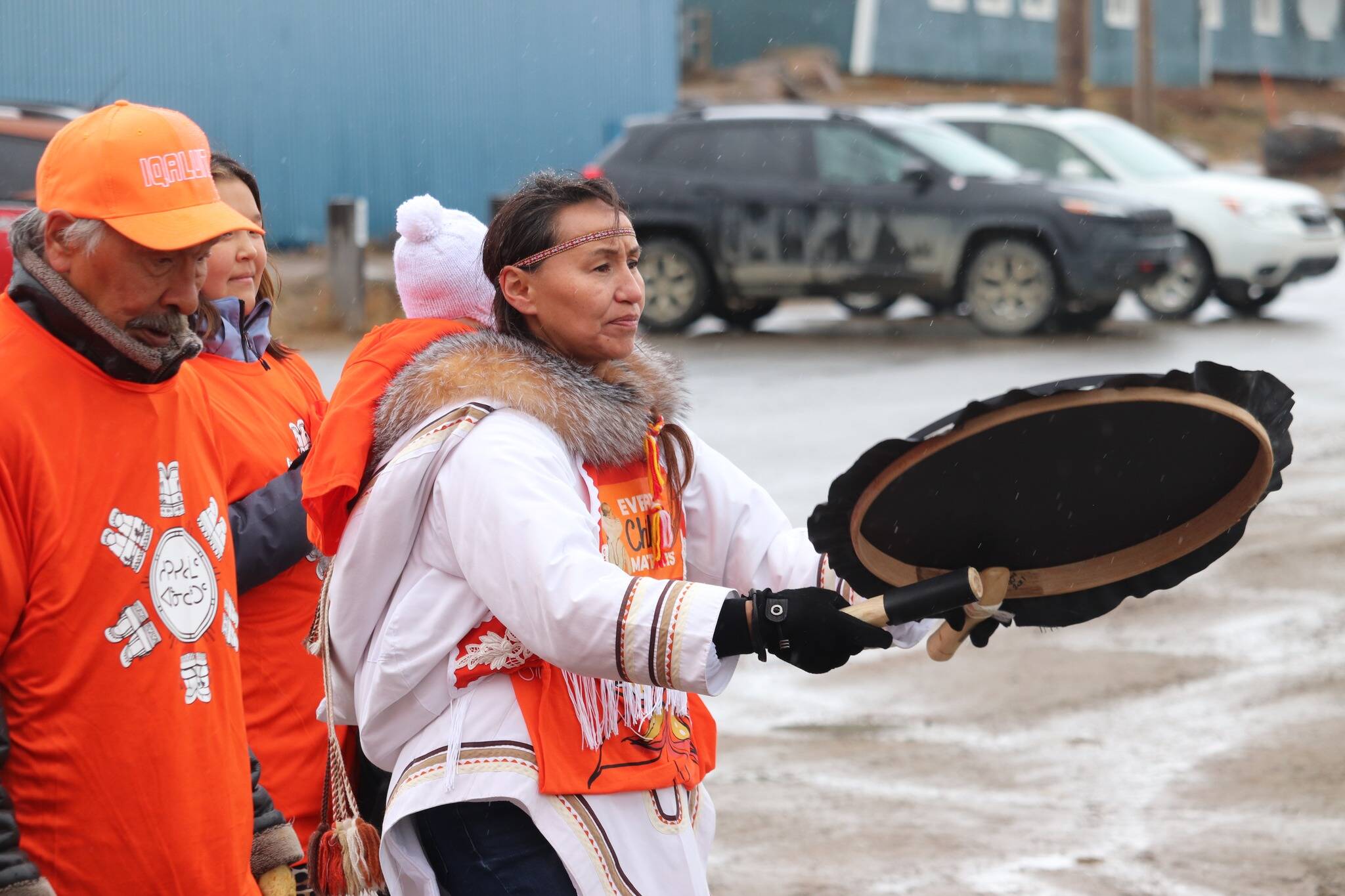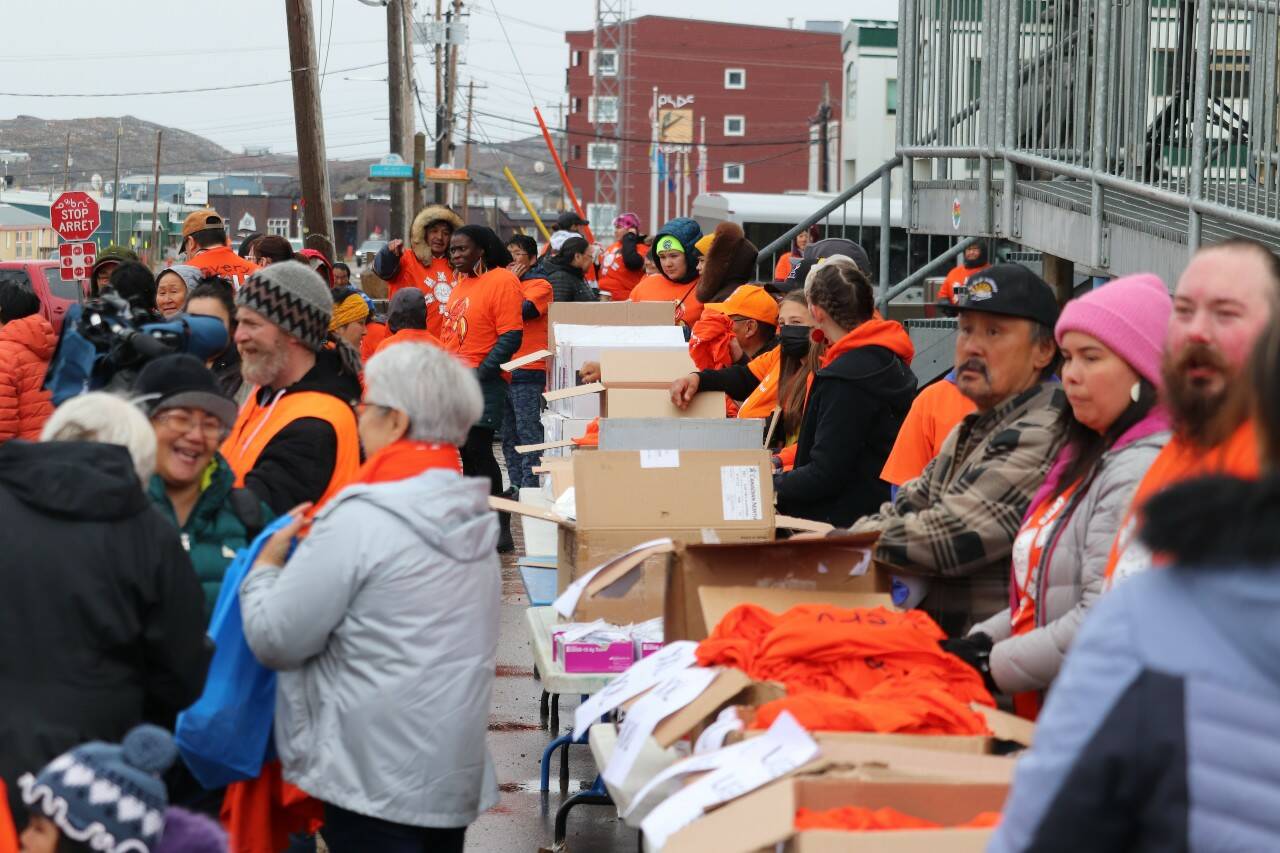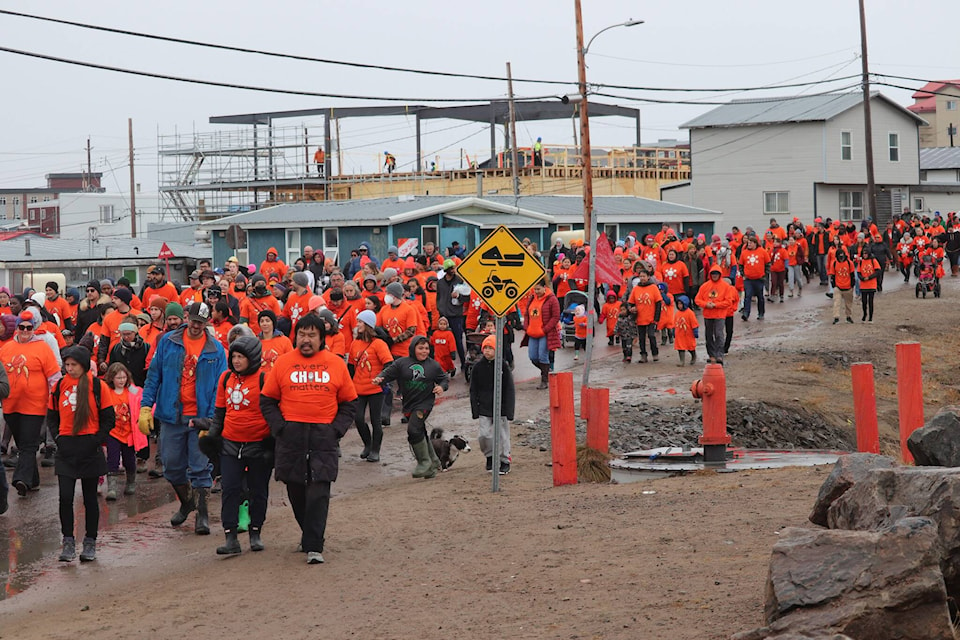The second National Day for Truth and Reconciliation on Sept. 30, also known as Orange Shirt Day, was a sombre occasion for many in the territory.
Perhaps more so for the survivors of the Canadian Residential School System.
“Our words should have been taken much more seriously in the past,” said Jack Anawak, a survivor of residential schools and former Nunavut MP.
Attempted assimilation, physical, emotional and sexual abuse took place in residential schools which operated from the late 19th century up until the late 1990s.
Having worked on bringing attention to residential schools for over 30 years, Anawak is still glad the issue is now at the forefront of national attention despite the circumstances which brought it forward.
“We had some successes, but it wasn’t until the 215 unmarked graves (in Kamloops) were found, it started escalating toward everyone acknowledging that these abuses occurred,” Anawak said.
Former Nunavut Premier and survivor Paul Quassa said Sept. 30 now serves as a day to teach Canada what the federal government has historically done to Indigenous people.
“Indigenous peoples are the first peoples of this land and the treatment that they got should always be in the history books,” he said.
Quassa noted apologies from former prime minister Stephen Harper in 2008, and later from Pope Francis earlier this year, as examples of the world recognizing the abuses of Canada’s residential school system.
“Those are the two very important people that a lot of us had to hear from in order for us to start the healing process,” said Quassa.
Along with the appointment of Canada’s first Inuk Governor-General in Mary Simon, Quassa adds that it’s “a recognition of the facts and truth of what took place and what should never take place again.”
What Anawak hopes will come out of the recognition of residential school abuses is the introduction of more mental health resources for survivors and families going through that cycle of abuse left by those schools. He also wants to see Elders involved in mental health programs.
“The Elders in the community know about life in general. If we encourage the people who need help to go to Elders and talk about these things and having the necessary mental health program funding, I think we’re on our way back,” he said.
“I’m happy we have come to today,” said Anawak. “Tikipugut, which means we have arrived — I think that’s an apt thing to say about it.”



